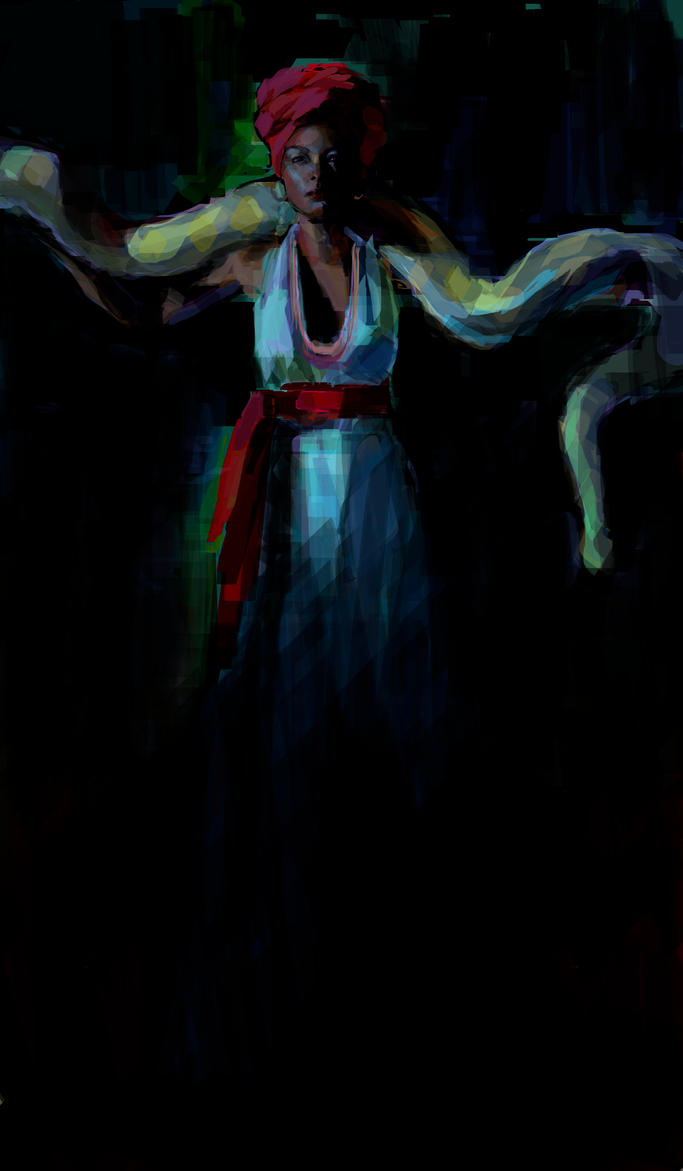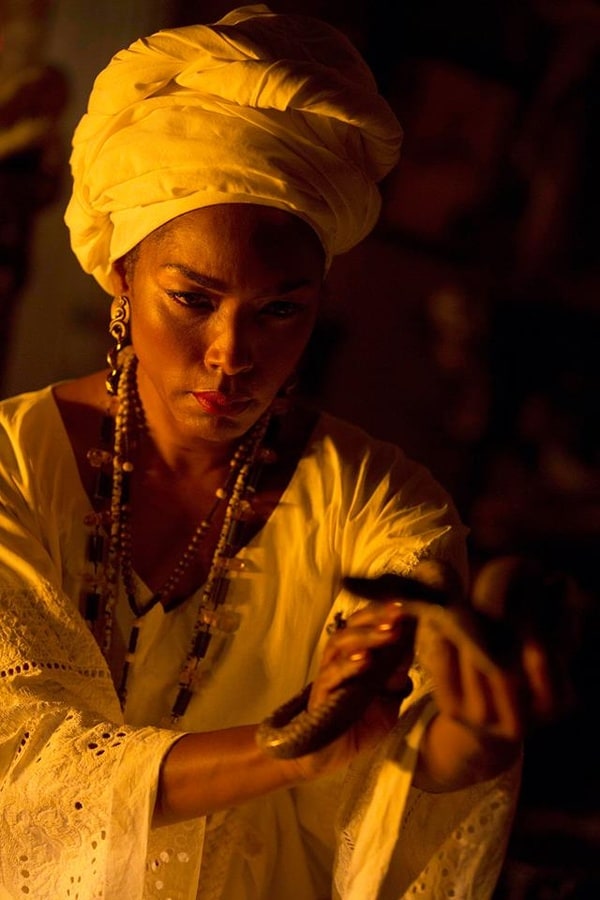-
*Astrella.
User deleted
The Famous Witch In History: Marie Laveau, The Queen of Voodoo

Marie Catherine Laveau (September 10, 1801 ? - June 16, 1881 [1]) was a Louisiana Creole practitioner of Voodoo renowned in New Orleans. (As for the date of her birth, while popular sources often say 1794, the records indicate 1801).Her daughter, Marie Laveau II, (1827 — c. 1895) also practiced Voudoun, as well as Voodoo.
She and her mother had great influence over their multiracial following. "In 1874 as many as twelve thousand spectators, both black and white, swarmed to the shores of Lake Pontchartrain to catch a glimpse of Marie Laveau II performing her legendary rites on St. John's Eve (June 23–24)."
Early life
Historical records surmise that Marie Laveau was born free in the French Quarter of New Orleans, Louisiana, about 1801. She was the natural daughter of two free persons of color, both biracial, one of whom was Creole.
On August 4, 1819, she married Jacques (or Santiago, in other records) Paris, a free person of color who had emigrated from Haiti. Their marriage certificate is preserved in St. Louis Cathedral in New Orleans.
The wedding mass was performed by Father Antonio de Sedella, the Capuchin priest known as Pere Antoine.
Jacques Paris died in 1820 inside the attic/torture chamber of Delphine LaLaurie. He was part of a large Haitian immigration to New Orleans in 1809, after the Haitian Revolution of 1791-1804.
New immigrants consisted of French-speaking white planters and thousands of slaves as well as free people of color. Those with African ancestry helped revive Voodoo and other African-based cultural practices in the New Orleans community, and the Creole of color community increased markedly.
Career
Very little is known with any certainty about the life of Marie Laveau. It is believed Laveau and her surviving daughter had the same name, her daughter being named Marie Laveau II. Scholars[who?] believe that the mother was more powerful[vague] while the daughter arranged more elaborate public events (including inviting attendees to St. John's Eve rituals on Bayou St. John).
They received varying amounts of financial support. It is not known which (if either) had done more to establish the voodoo queen reputation. Marie Laveau ll was believed to have three children whom she shipped off to the Dominican Republic after threats were made to burn them alive.
Marie's husband, Jose Huerta, had raised the children on his own to keep the vodoun tradition within his family. The last recorded descendents of this family are Victor Delgado-Huerta (born 1999) and Melenie Delgado-Huerta (born 2003). Both still practice vodoun but have not been given higher titles by the International Voodoo Society. One of the sons of Marie I and Christophe Duminy de Glapion was Alexis Celestin Glapion born 1834. He stayed in New Orleans where he and his wife Emma Vicknaire had 11 children. The last recorded descendants of this line of the family live in Detroit, MI and Boston, MA.
"The only evidence that exist(s) of any sort of occupation she had was (as) a liquor importer (in 1832) on Dauphine Street in the Faubourg Marigny (in New Orleans)." Folklore says at one time she also became a hairdresser.
She took a lover, Christophe Dominick Duminy de Glapion, with whom she lived until his death in 1835. They were reported to have had 15 children, including Marie Laveau II, born c. 1827, who sometimes used the surname "Paris" after her mother's first husband.
Of Laveau's magical career, there is little that can be substantiated, including whether she had a snake she named Zombi after an African god, whether the occult part of her magic mixed Roman Catholic saints with African spirits, or whether her divinations were supported by a network of informants she developed while working as a hairdresser in prominent white households and in a brothel she ran.
She appeared to excel at obtaining inside information on her wealthy patrons by instilling fear in their servants whom she either paid or cured of mysterious ailments.
Death
On June 16, 1881, the New Orleans newspapers, the Daily Picayune for one, according to "Voodoo in New Orleans" by Robert Tallant, announced that Marie Laveau had died peacefully in her home. This is noteworthy if only because people claimed to have seen her in town after her supposed demise. Plaque on Marie Laveau's grave
Plaque on Marie Laveau's grave
Again, some claimed that one of her daughters also named Marie (many of the daughters had Marie within their names due to Catholic naming practices) assumed her name and carried on her magical practice, taking over as the queen soon before or after the first Marie's death.
According to official New Orleans vital records, Marie Glapion Lavau died on June 15, 1881, aged 98.
The different spellings of her surname may result from a casual approach to spelling, and her age at death from conflicting accounts of her birthdate.
Legacy
Marie Laveau is generally believed to have been buried in plot 347, the Glapion family crypt, in Saint Louis Cemetery No. 1 in New Orleans, but this has been disputed by at least Robert Tallant, a journalist who used her as a character in historical novels.
Tourists continue to visit and some draw "X" marks in accordance with a decades-old rumor that if people wanted Laveau to grant them a wish, they had to draw an "X" on the tomb, turn around three times, knock on the tomb, yell out their wish, and if it was granted, come back, circle their "X," and leave Laveau an offering.

The tomb in Saint Louis Cemetery No. 1 was vandalized on December 17, 2013, by being painted over with pink latex paint, likely in an attempt by a "homeless, mentally unstable kid" to cover up the "X" mark graffiti.
The paint must be removed because the structure is made of old plaster and the latex paint would seal in moisture that would destroy the plaster, but some historical preservation experts have criticized the decision by the Archdiocese of New Orleans, who maintain the cemetery, for their decision to use pressure washing rather than paint stripper to remove it.
Although some references to Marie Laveau in popular culture refer to her as a "witch", she is properly described as a 'Voodoo priestess'.
Artistic legacy
Because of her prominence within the history of Voodoo in New Orleans, Laveau has inspired a number of artistic renditions.
In visual art, the African American artist Renee Stout often uses Laveau as a visual motif.
Numerous songs about Marie Laveau have been recorded, including "Marie La Veau" by Papa Celestin, "Marie Laveau" by Shel Silverstein, "Witch Queen of New Orleans" (1971) by Redbone, "Dixie Drug Store" by Grant Lee Buffalo, "X Marks the Spot (Marie Laveau)" by Joe Sample, "Marie Laveau" by Dr. John, "Marie Laveau" (2013) by Tao Of Sound, and "The Widow Paris" by The Get Up Kids. Marie Laveau is mentioned in the song "I Will Play for Gumbo" (1999) by Jimmy Buffett.
Laveau has offered inspiration for a number of fictional characters as well.
She is the protagonist of Jewell Parker Rhodes' novel Voodoo Dreams: A Novel of Marie Laveau (1993). Laveau appears as a supporting character in the Night Huntress novels by Jeaniene Frost, as a powerful ghoul still living in New Orleans in the 21st century.
Marie Laveau appears in Neil Gaiman's novel American Gods, under her married name, Marie Paris. Most prominently in comics, a character named Marie Laveau, based loosely on the real Marie Laveau, appears in Marvel Comics. She first appeared in Dracula Lives #2 in 1973.
She is depicted as a powerful sorceress and Voodoo priestess with great magical powers and knowledge of arcane lore, including the creation of a potion made from vampire's blood that keeps her eternally youthful and beautiful. Also, a character named Marie Laveau, based loosely on the real Marie Laveau, appears in the Italian comic book Zagor.
In TV, Marie Laveau (portrayed by Angela Bassett) appears as a character in American Horror Story: Coven and appears in the Canadian television series Lost Girl in episode 11 of season 4.
Marie Laveau's tomb is the site of a secret, underground voodoo workshop in The Caster Chronicles novel Beautiful Chaos by Kami Garcia and Margaret Stohl.
Laveau's grave site, in Saint Louis Cemetery No. 1, is the setting of a pivotal scene in Robert J. Randisi's short story, "Cold As The Gun", from Foreshadows: The Ghosts of Zero.
She inspired a Total Nonstop Action Wrestling gimmick, "The Voodoo Queen" Roxxi Laveaux.
The mother of Hazel Levesque, one of the characters from Rick Riordan's The Heroes of Olympus book series, was known as "Queen Marie," a famous fortune teller who lived in New Orleans.
Source: http://en.wikipedia.org/wiki/Marie_Laveau.
The Famous Witch In History: Marie Laveau, The Queen of Voodoo |


